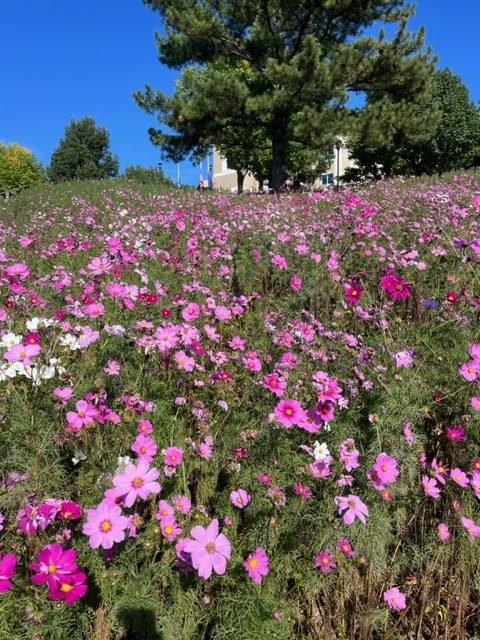Grants and Cost-Share Opportunities for Wildflower Meadows
Are you sick of mowing your lawn? Do you own land that is just cool season grasses? Want to spend less, see more, and do better?
Plant wildflowers.
There are many factors contributing to the decline of native pollinators, but one of the known largest contributing factors is habitat loss. With each new development, each new millionth person born, each new city expanded, pollinators lose native habitat. Humans build houses and then plant lawns and non-native ornamental trees and shrubs and change the landscape in a matter of months. Native pollinators (native bees, butterflies, moths, birds, etc) rely on native meadows to provide food, nesting habitat, and shelter.
So the solution is easy, right? Kill your lawn and plant wildflower meadows instead. You have to mow them less, they’re beautiful, and they’re the right thing to do for our friends the pollinators. But there is a catch – it’s expensive!
These native plants are often slow growing, difficult to grow in a monoculture, have small or irregular seed sizes, contain “fluff” and other “chaff” to protect or move the seed in nature, and are not competitive against invasive weeds or improved agricultural varieties. For this reason, the production of native seed is expensive (it really is, and will be). You’ll notice a huge price difference in a bag of meadow mix compared to a bag of turf grass mix. This really is a labor of love, the price is appropriate.
But still, it’s expensive. Lucky for you, there are grants to help! In addition, many states and counties have local specific programs to help with cost-share and/or reduced real estate taxes to incentivize rewilding of your property.
Below is a list of grants and programs that exist to help you pay for the installation of a wildflower meadow. Check them out and see this instead of boring grass:
Grants/Cost Share Programs for Wildflowers:
Seed a Legacy Program – grants to cover the cost of seed for wildflower programs. Not available in all states.
State Conservation Programs – Many states have conservation programs. Here in Virginia, our home state, Virginia Department of Conservation and Recreation oversees localized Soil and Water Conservation Districts. These districts have cost-share programs for land, farm, and homeowners to install pollinator habitat. Programs vary by state. In Texas, pollinator habitat is a qualified land use to pay reduced property tax. Check with your local tax and conservation offices.
NRCS Conservation Programs – The Federal Government’s USDA NRCS funds conservation programs such as the Environmental Quality Incentives Program (EQIP) which provides cost share dollars to farmers and landowners who install pollinator habitat. Usually these incentives come with a contract to keep the pollinator habitat installed in exchange for a dollar amount per acre which should cover most of the cost of install.
Pollinator Partnership – One of the leading non-profits for the benefit of pollinators is the Pollinator Partnership. They have many programs and grants which open at various times (when funding allows) to fund pollinator projects. They also have voluntary certification programs for your farm or yard. Something to add to your label!
Xerces Pollinator Resource Center – The other leading non-profit to benefit pollinators, Xerces, has great resources on their website that are specific to your region. Their website is loaded with information on where to get assistance and the best things you can do to help pollinators.
FSA CRP – The USDA FSA oversees the Conservation Reserve Program. For farmers or ranchers with land in agricultural production, the federal government will pay annual rent on land removed from production to create wildlife habitat such as pollinator habitat.



